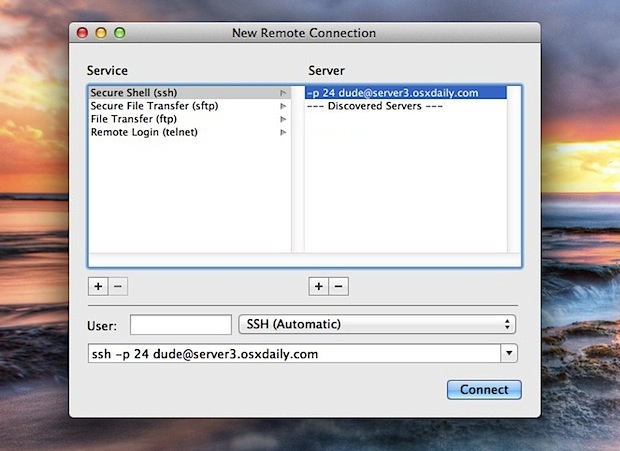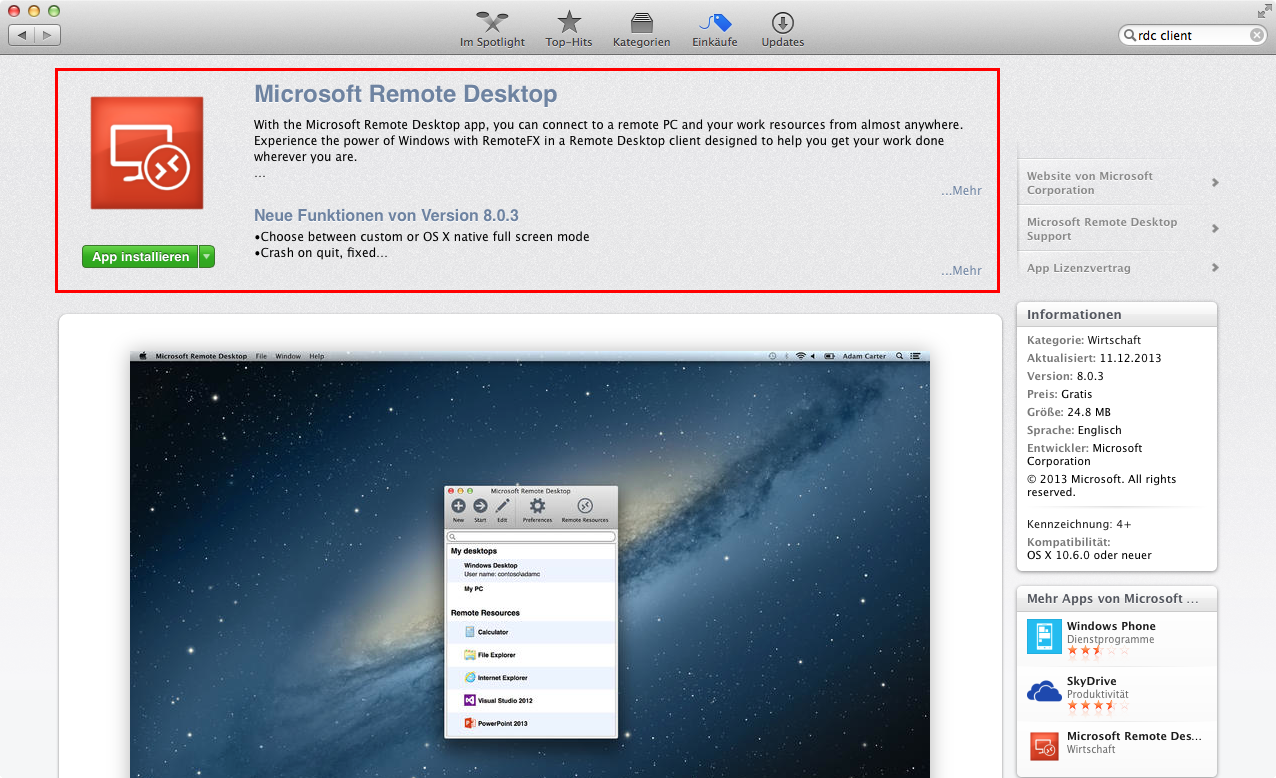Terminal Server For Mac Os
Remote Desktop Client for Chrome OS devices Google is currently adding support for Android Play Store apps to Chrome OS devices. Where the device supports using Android apps (see Chromium link below), the Microsoft Remote Desktop Client application for Android can be used, see links above for download. In the Finder on your Mac, choose Go Connect to Server. Type the network address for the computer or server in the Server Address field. For information about the correct format for network addresses, see Network address formats and protocols. Select how you want to connect to the Mac.
Terminal User Guide
With Terminal, you can connect to remote servers using several protocols, including ssh, sftp, ftp, telnet, or a protocol you define.
In the Terminal app on your Mac, choose Shell > New Remote Connection.
Select a protocol in the Service list.
Select a shared server in the Server list.
In the User field, enter a user name, then click Connect.
If you know the server’s IP address, you can enter it directly in the address field at the bottom of the window.
Terminal Server For Mac Os Catalina


| Developer(s) | Apple Inc. |
|---|---|
| Operating system | macOS |
| Platform | x86-64, IA-32, PowerPC |
| Type | Terminal emulator |
| Website | www.apple.com/macosx/features/unix/ |

Terminal (Terminal.app) is the terminal emulator included in the macOSoperating system by Apple.[1] Terminal originated in NeXTSTEP and OPENSTEP, the predecessor operating systems of macOS.[2]
As a terminal emulator, the application provides text-based access to the operating system, in contrast to the mostly graphical nature of the user experience of macOS, by providing a command-line interface to the operating system when used in conjunction with a Unix shell, such as zsh (the default shell in macOS Catalina[3]).[4] The user can choose other shells available with macOS, such as the KornShell, tcsh, and bash.[4][5]
The preferences dialog for Terminal.app in OS X 10.8 (Mountain Lion) and later offers choices for values of the TERM environment variable. Available options are ansi, dtterm, nsterm, rxvt, vt52, vt100, vt102, xterm, xterm-16color and xterm-256color, which differ from the OS X 10.5 (Leopard) choices by dropping the xterm-color and adding xterm-16color and xterm-256color. These settings do not alter the operation of Terminal, and the xterm settings do not match the behavior of xterm.[6]
Terminal includes several features that specifically access macOS APIs and features. These include the ability to use the standard macOS Help search function to find manual pages and integration with Spotlight.[citation needed] Terminal was used by Apple as a showcase for macOS graphics APIs in early advertising of Mac OS X,[citation needed] offering a range of custom font and coloring options, including transparent backgrounds.

See also[edit]

- iTerm2, GPL-licensed terminal emulator for macOS
- Terminator, open-source terminal emulator programmed in Java
References[edit]
Nuords
- ^'What Is Mac OS X - All Applications and Utilities - Terminal'. Apple Inc. Archived from the original on May 10, 2013.
- ^Wünschiers, Röbbe (January 1, 2004). Computational Biology: Unix/Linux, data processing and programming : with 19 figures and 12 tables. Springer Science & Business Media. ISBN9783540211426.
- ^'Use zsh as the default shell on your Mac'. Apple Support. Retrieved January 18, 2020.
- ^ abMcElhearn, Kirk (December 26, 2006). The Mac OS X Command Line: Unix Under the Hood. John Wiley & Sons. ISBN9780470113851.
- ^Kissell, Joe (January 1, 2009). Take Control of the Mac Command Line with Terminal. TidBITS Publishing, Inc. ISBN9781933671550.
- ^'nsterm - AppKit Terminal.app', terminfo.src, retrieved June 7, 2013
| Wikimedia Commons has media related to Terminal (macOS). |
Terminal Server For Mac Os 10.13
